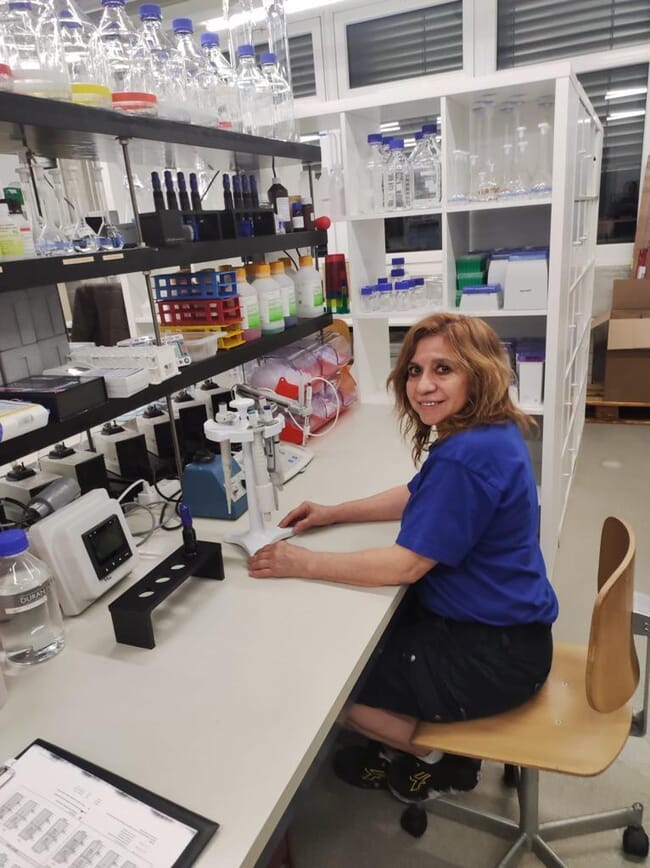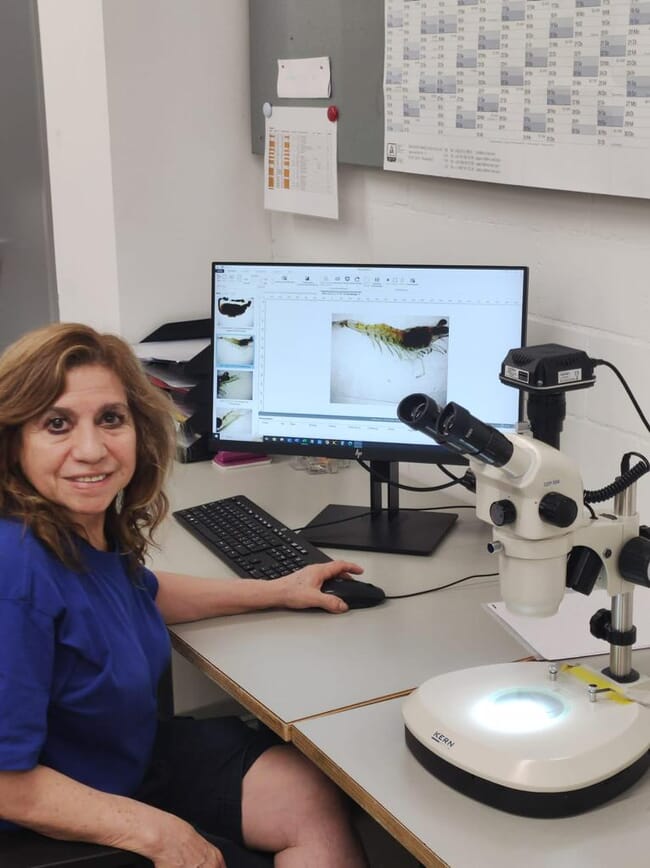
SwissShrimp is the largest indoor shrimp firm in Switzerland and operates a modern saltwater RAS with 16 different tanks.
What inspired you to pursue a career in aquaculture?
I was born in a beautiful coastal city – San Pablo de Manta, in Ecuador – with a great diversity of marine life on my doorstep. This helped to inspire me to study marine biology and aquaculture – first at the Universidad Estatal Santiago de Guayaquil, then at IGAFA in Spain.
What have the highlights of your time in aquaculture been so far?
One of my first jobs was with a family-run tuna canning company. A few years later, my husband and I bought our own land in Manta, near and built our own shrimp farm and were proud to make it successful.
I moved to Spain, then – four years ago – to Switzerland. We initially worked with fish – including perch, zander and catfish – which was new for us, but it was a great experience. And this year I started working in the department of aquaculture and biology with the pioneering shrimp farming company SwissShrimp AG.

Can you tell us a bit about the set-up at SwissShrimp?
Since August 2018, we have been operating a modern saltwater RAS (16 tanks, with eight different water treatment systems), in Rheinfelden, near Basel. It has a target capacity of 60 tonnes of fresh Litopenaeus vannamei a year for the premium market. We harvest on demand (the customer can choose the day) and deliver the shrimp freshly harvested. The product range includes whole shrimp (head on), head off or peeled – from 20 g to over 50 g.
How does it compare to other indoor shrimp farming operations?
SwissShrimp is the largest indoor shrimp farming company in Switzerland and one of the largest in Europe. The other operators in the country produce smaller volumes of shrimp using aquamimicry or biofloc systems.
What does a typical day consist of in your current role?
We follow a protocol. The principal objectives are to monitor the water quality and the bacteriological content, as well as optimising the feeding regime.

The company has a target capacity of 60 tonnes of fresh whiteleg shrimp each year.
How did you find the transition from running a traditional shrimp farm in Ecuador to working on an indoor farm in Switzerland?
It’s quite different, since Ecuador is a natural habitat for growing shrimp. Here in Switzerland we use the highest technology to create a natural habitat . We are very concerned about animal welfare and work without antibiotics, always improving the quality of our product.
What are the biggest challenges still to overcome in indoor shrimp farming?
To create a habitat as close as possible to nature.
Have you ever faced any gender-related challenges in your time in the industry?
Not at all, I have always worked with professionals and well educated people and have been treated with respect and the proper consideration of my gender.
Do you still follow developments in Ecuador’s shrimp sector and – if so – what sort of feedback do you get from your old shrimp farming friends and colleagues out there?
I keep in touch, and also go to the aquaculture congresses that take place in Ecuador, which help us be aware of everything new and so improve our work.

Why do you think Ecuador’s sector is doing so well?
The shrimp farming sector in Ecuador was also a pioneer in its class and it had to go through many difficulties. It was through the constant attempt to overcome these difficulties, with help from our Chamber of Aquaculture and the constant training of its professionals, that the current progress of the sector has been achieved.
What are your own aquacultural goals in the coming years?
As always, to continue research to improve my knowledge of shrimp farming, and of aquaculture in general.
In fields such as genetics, biopathology, bacteriophages and probiotics, there is still a lot of work to do, and a long way to go. Technology is a great tool in our profession, so we have to keep updating our knowledge to be up to the task of our great profession and great passion: aquaculture.








